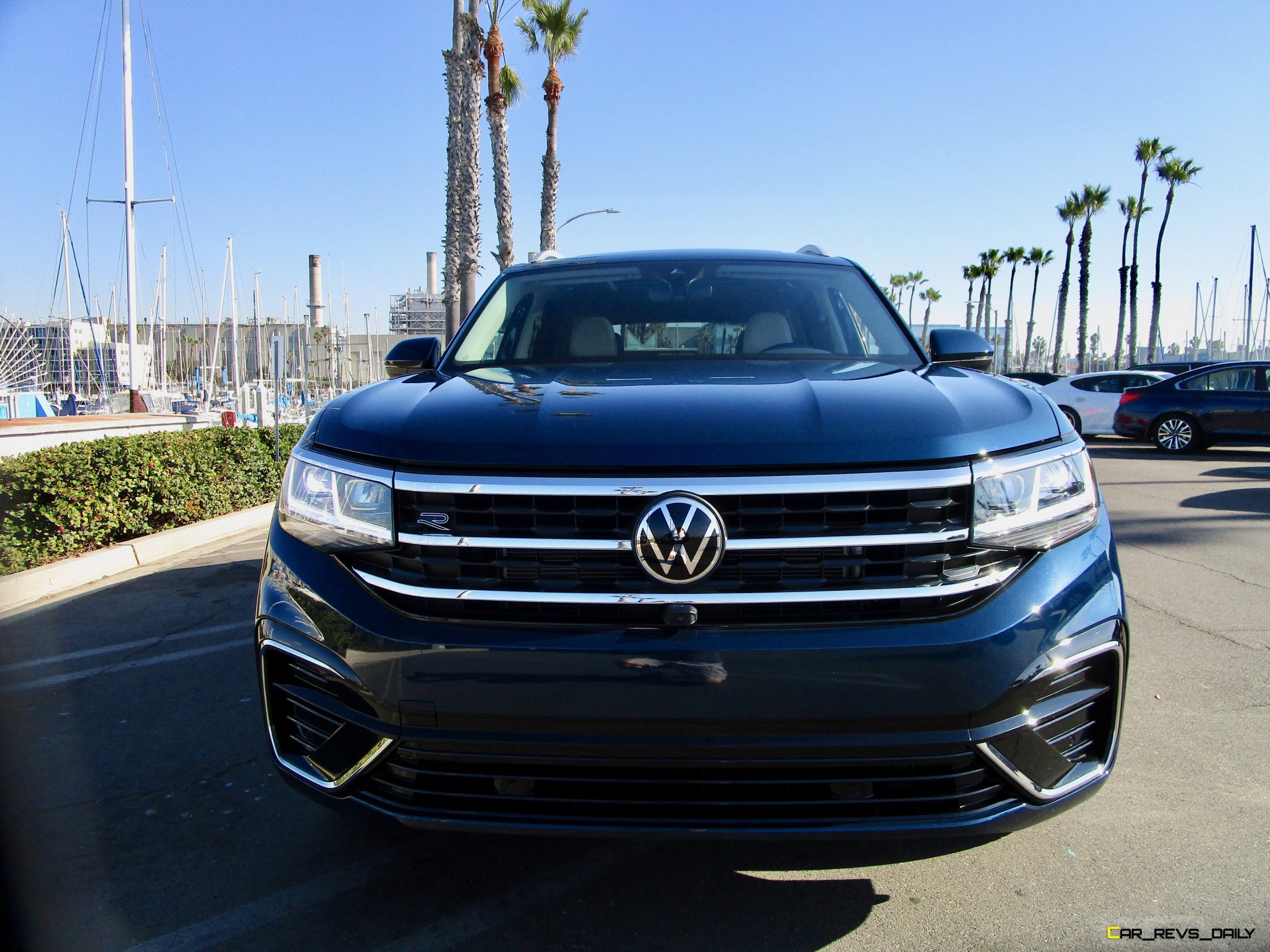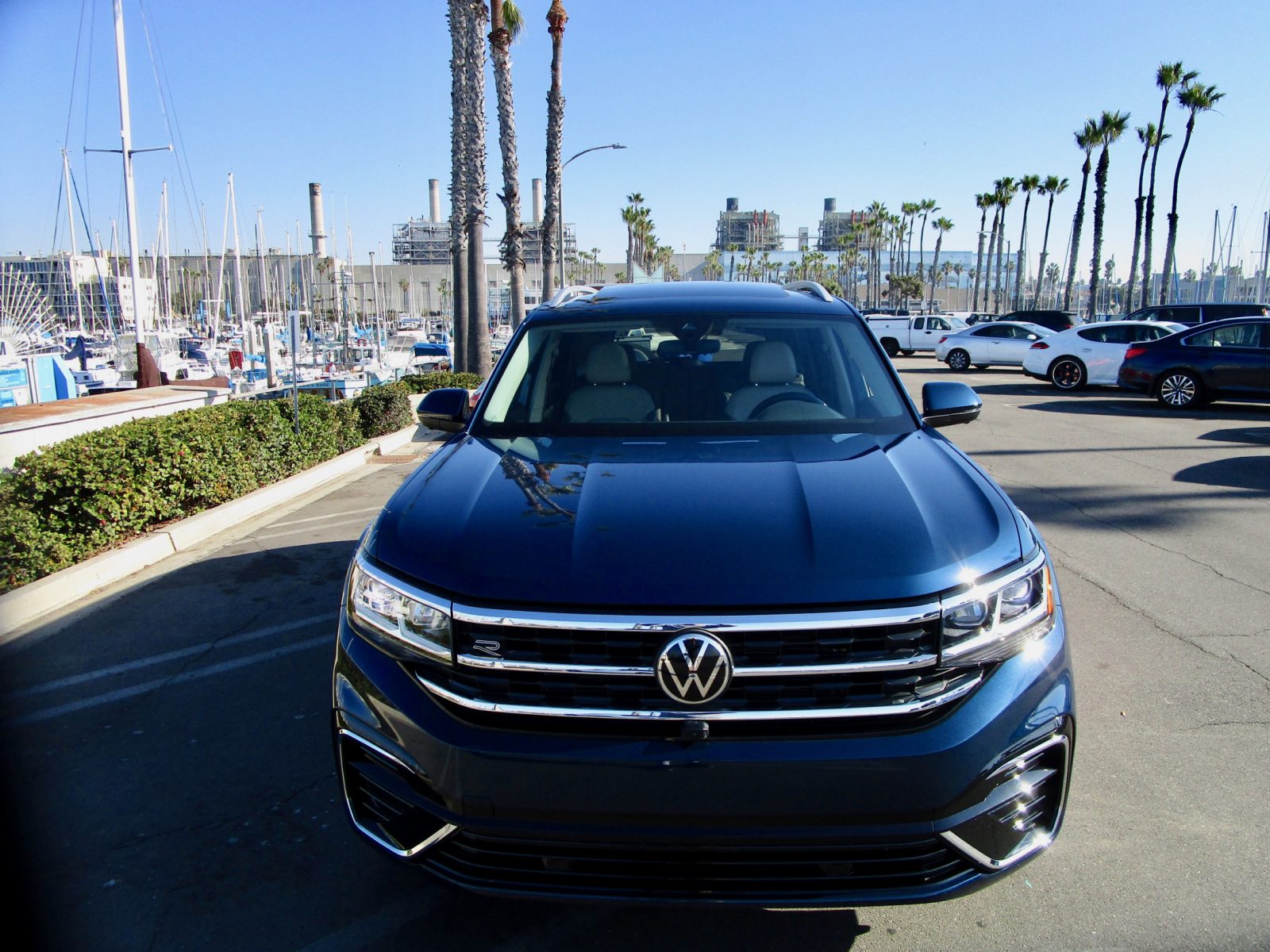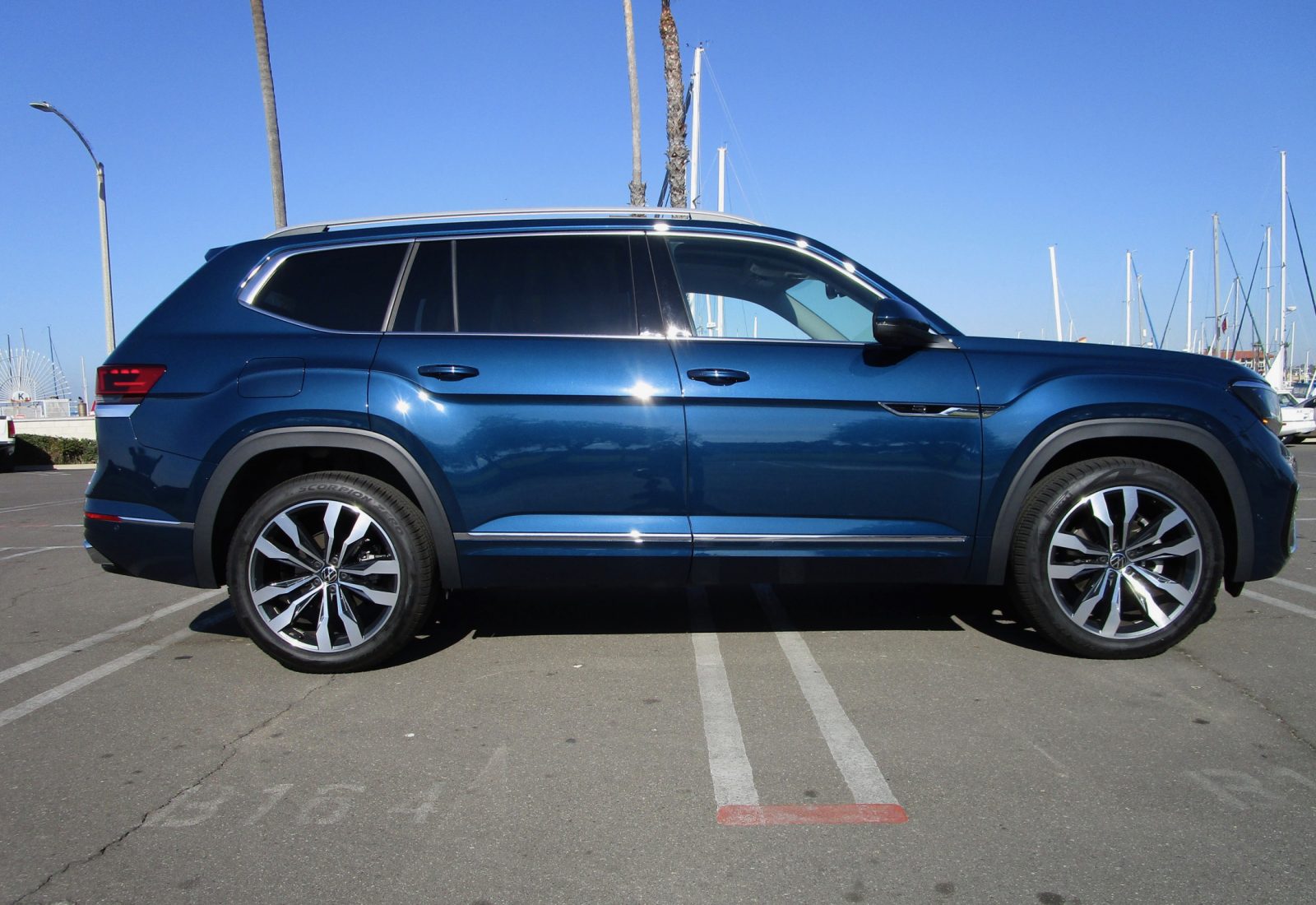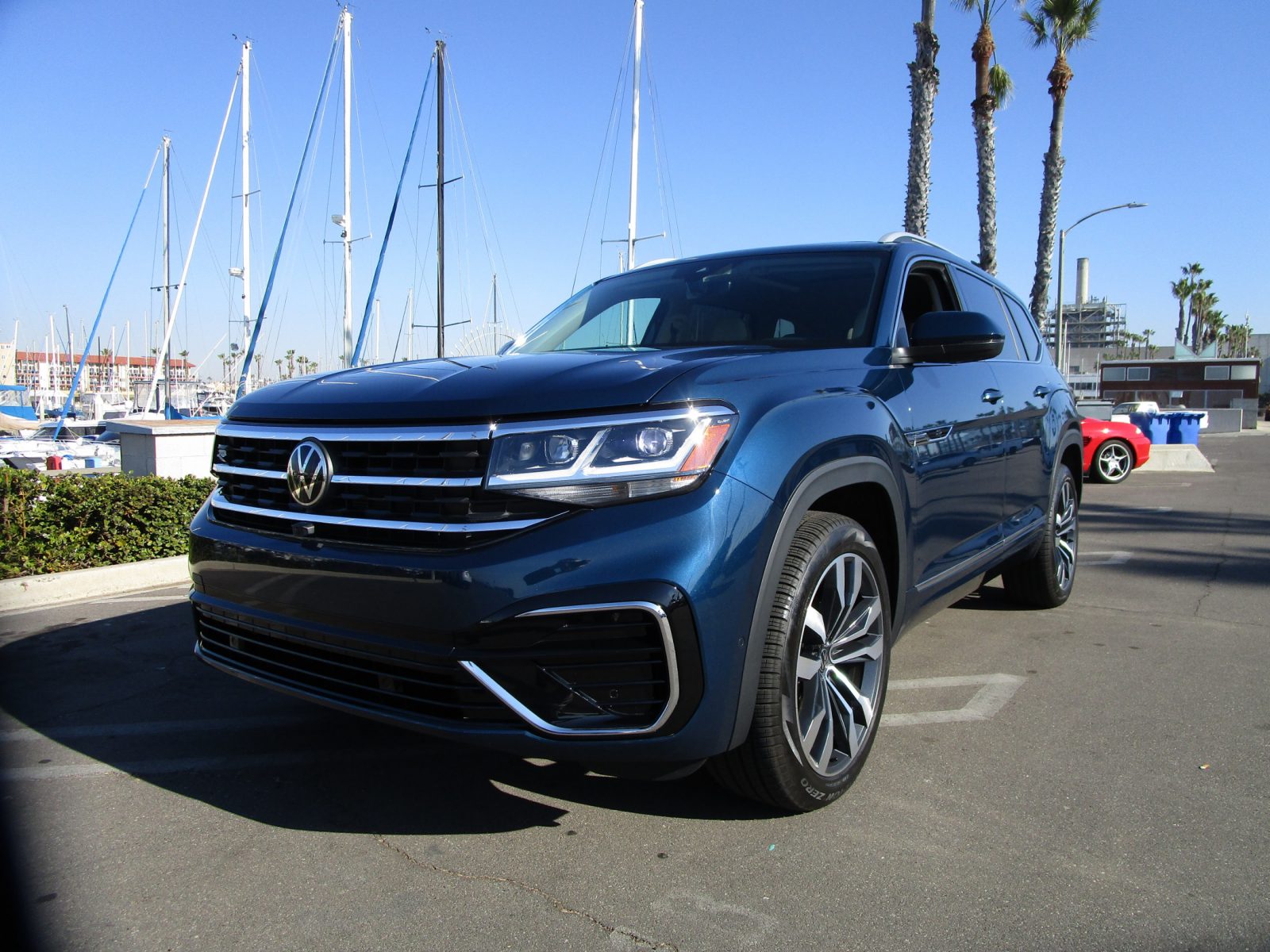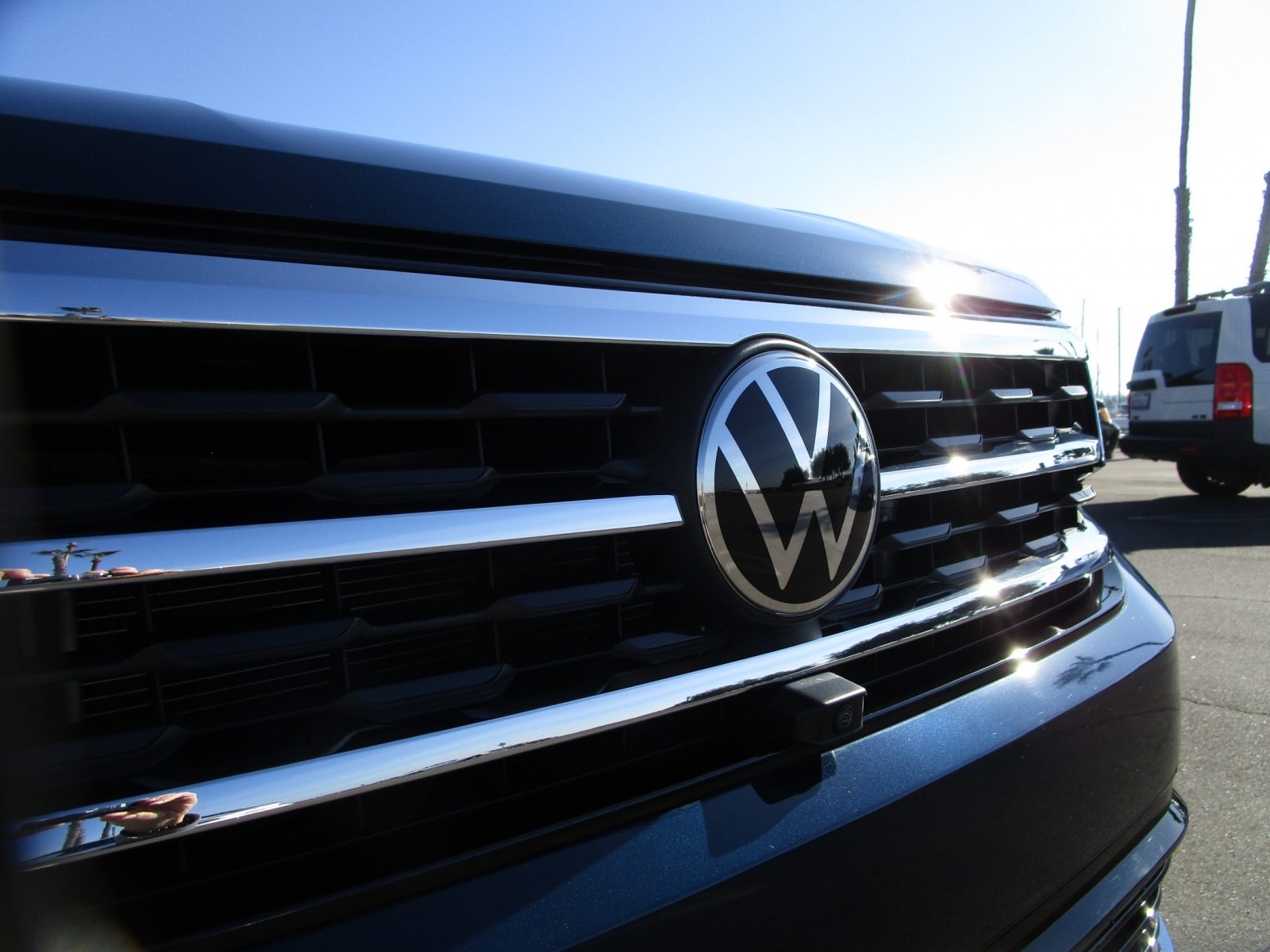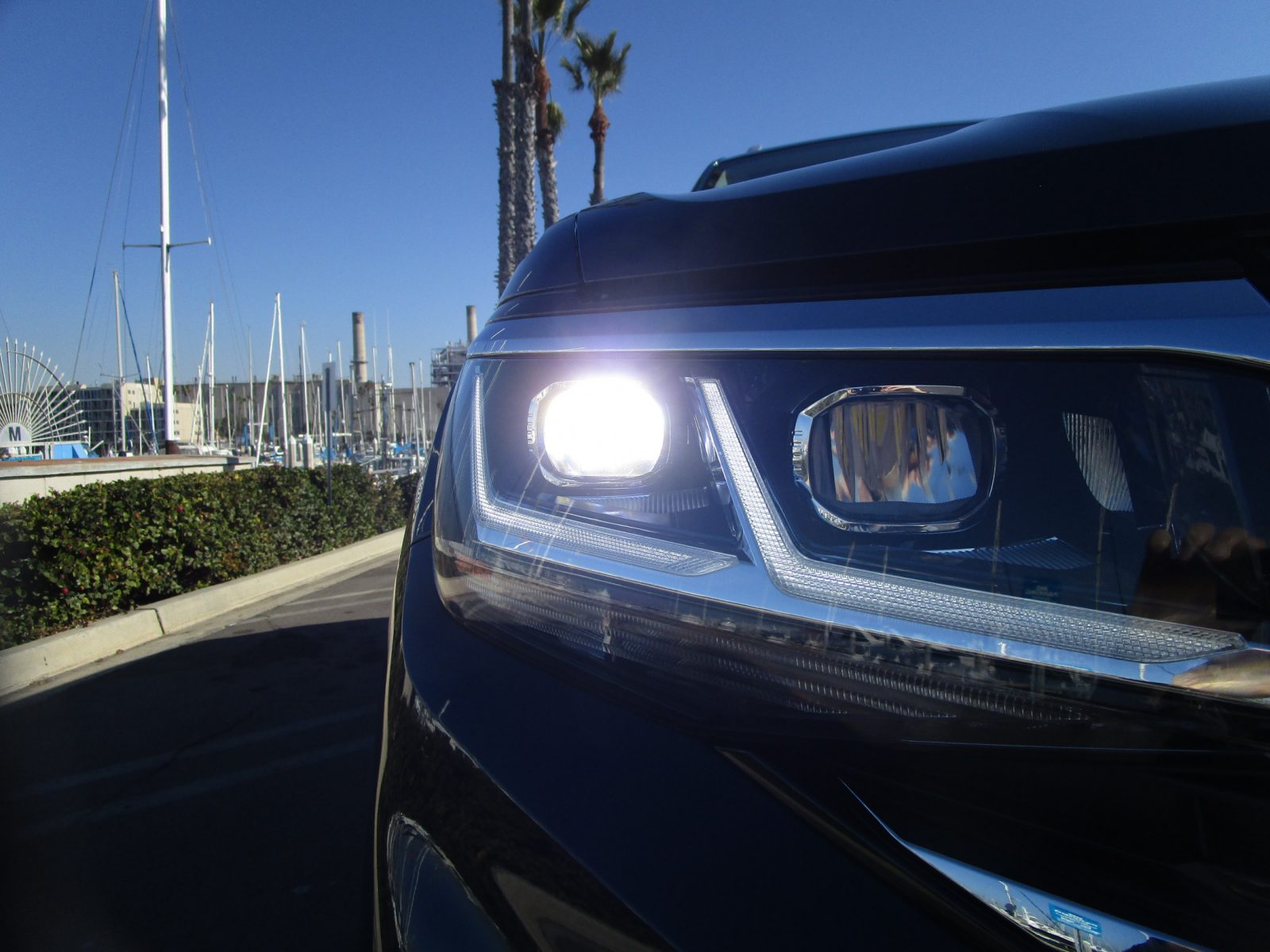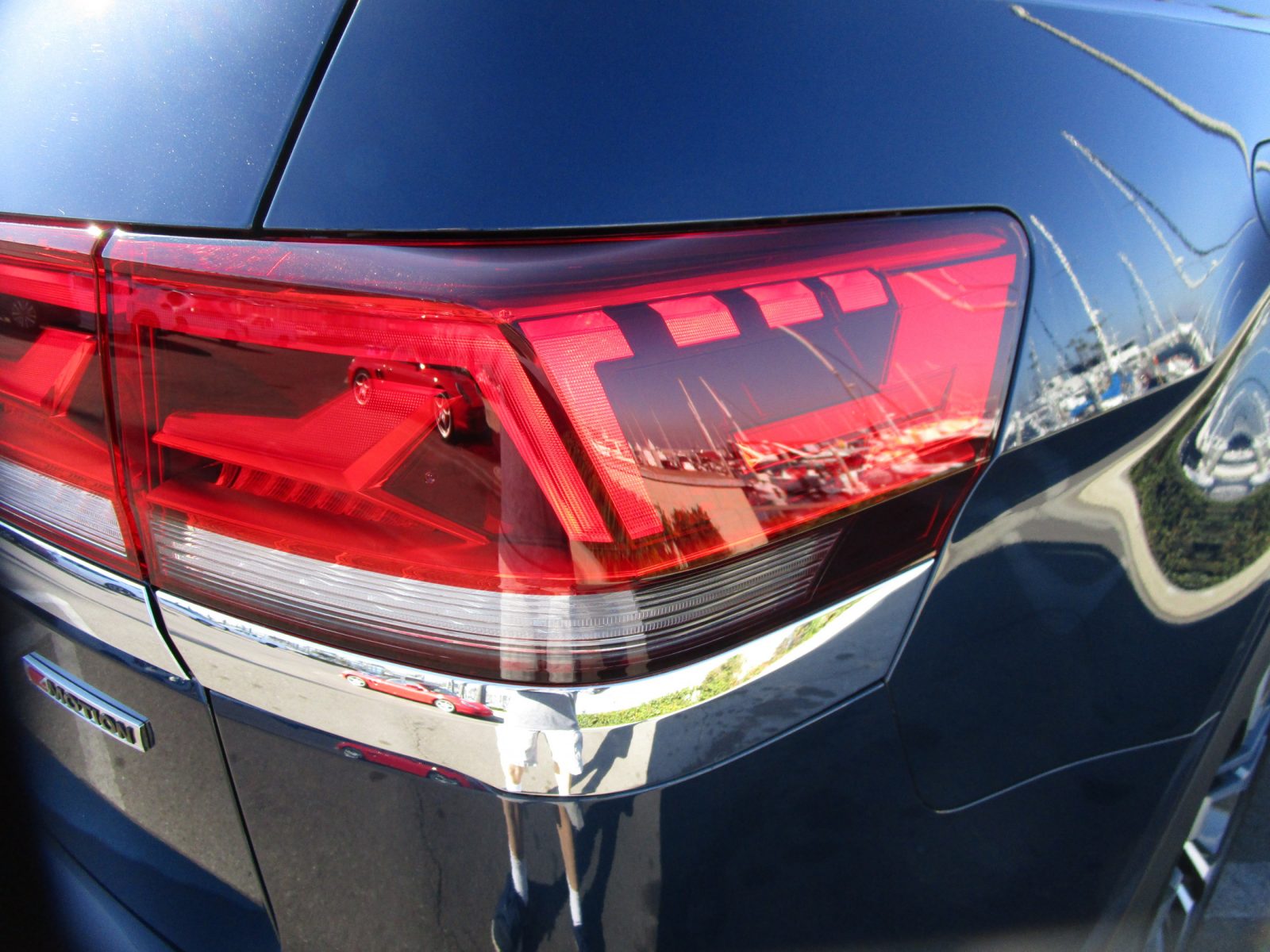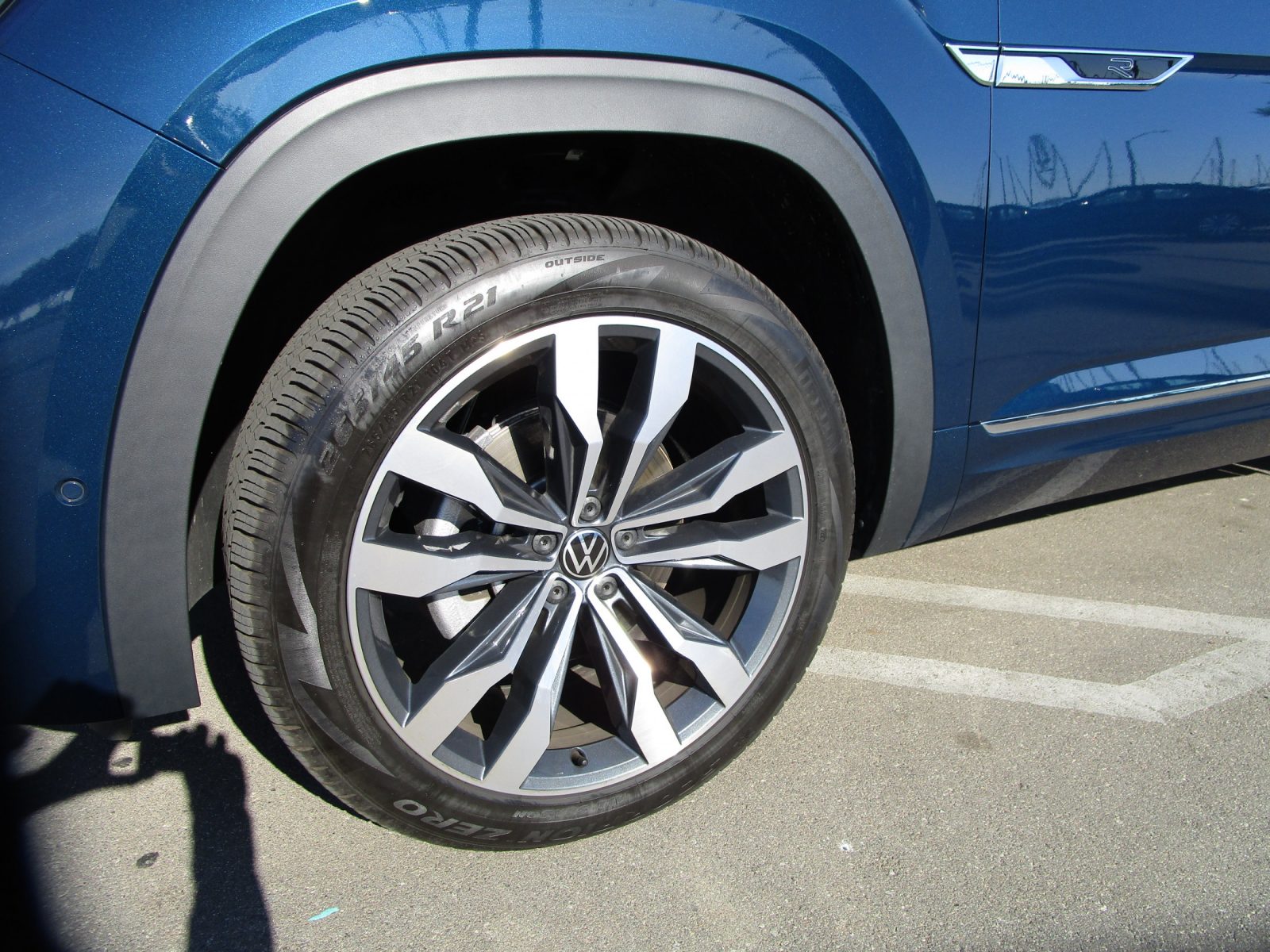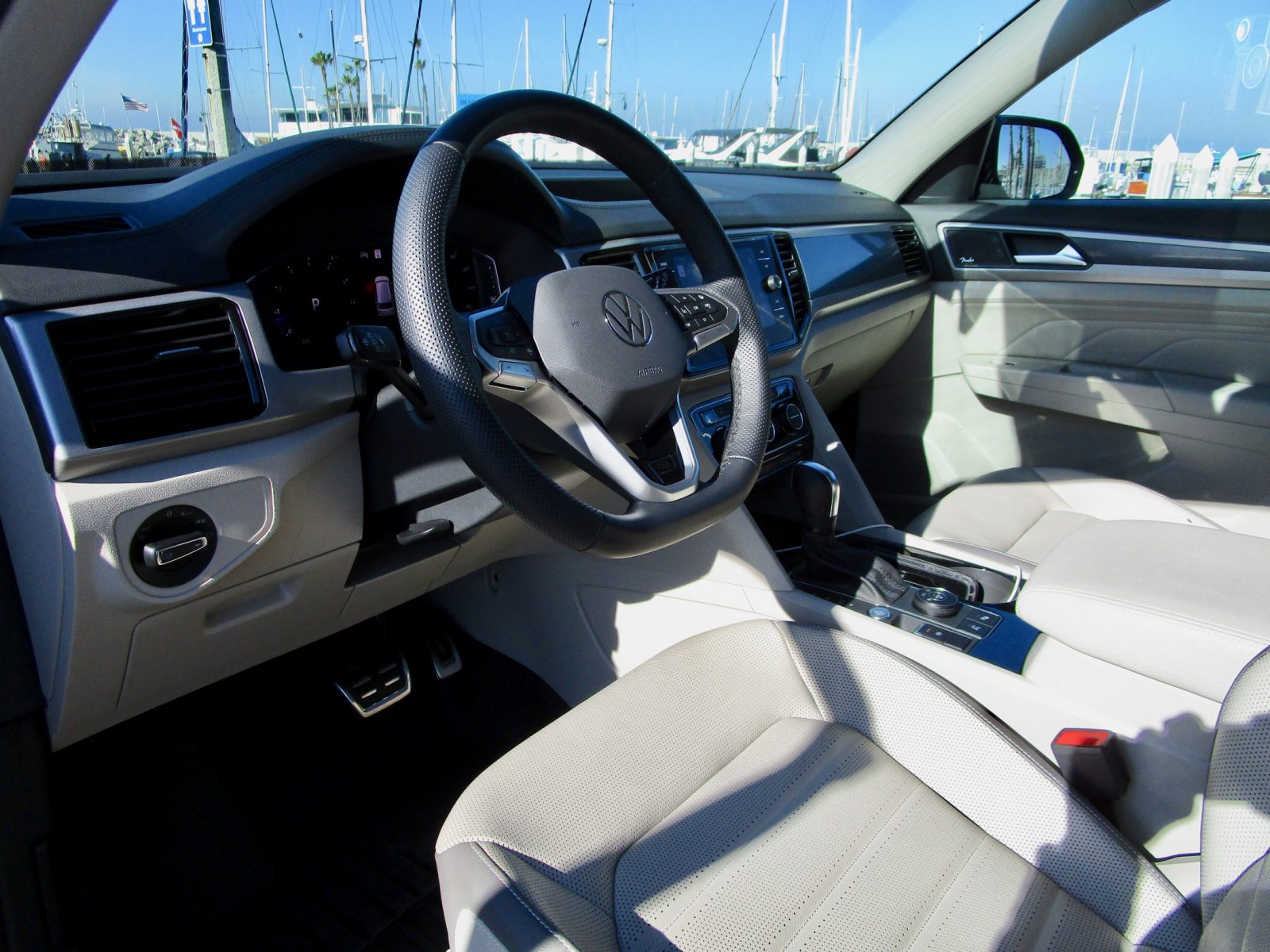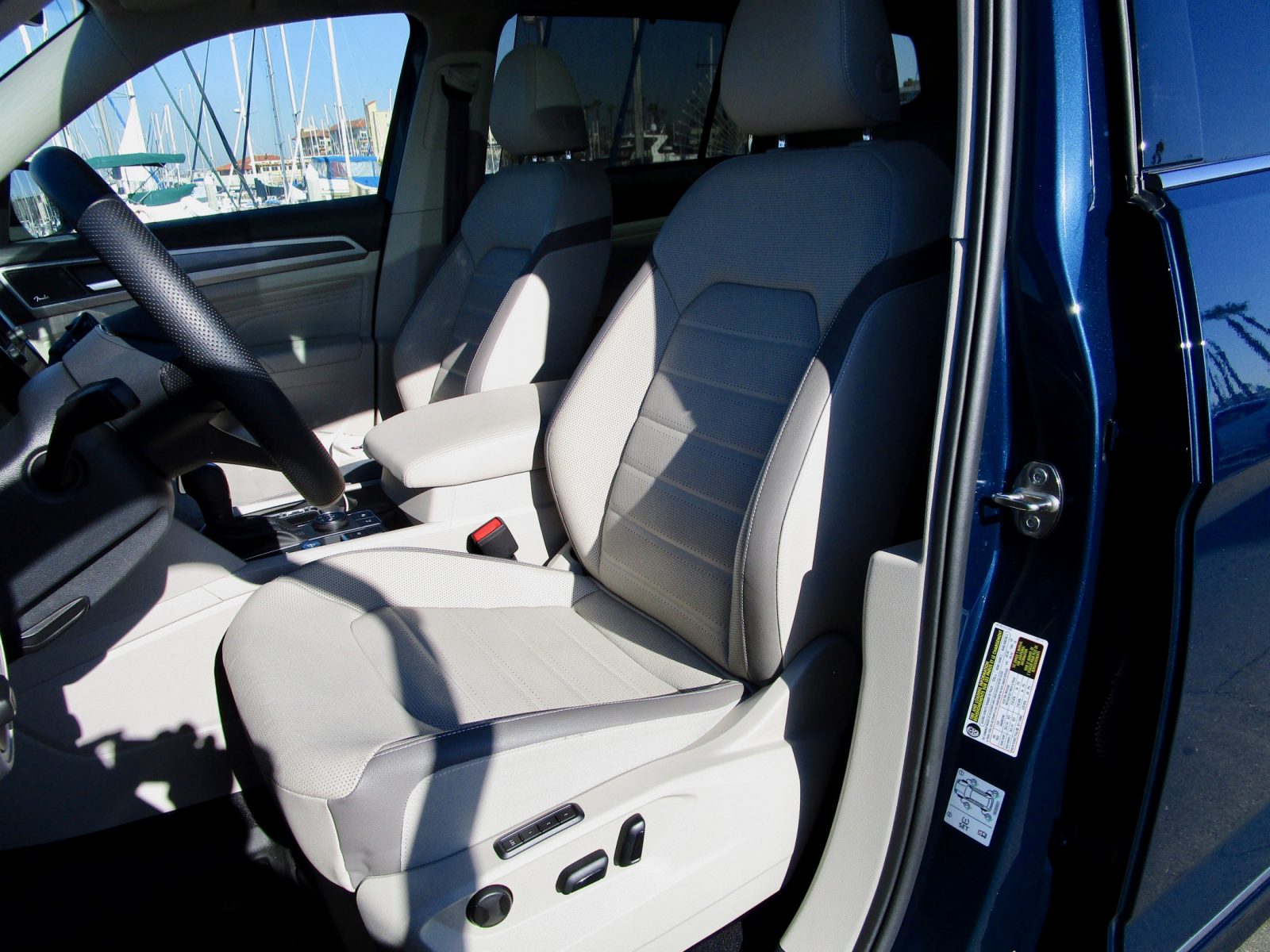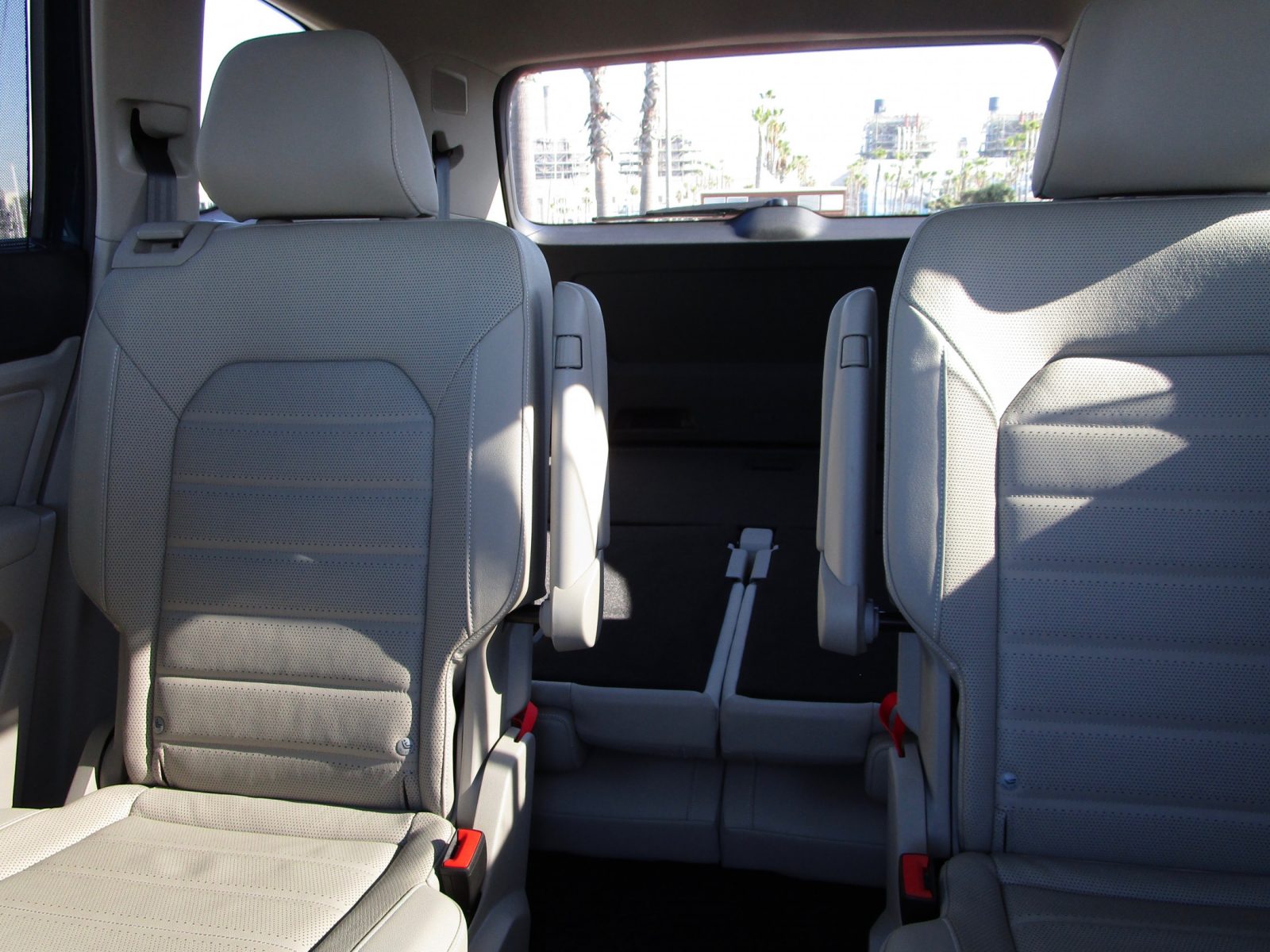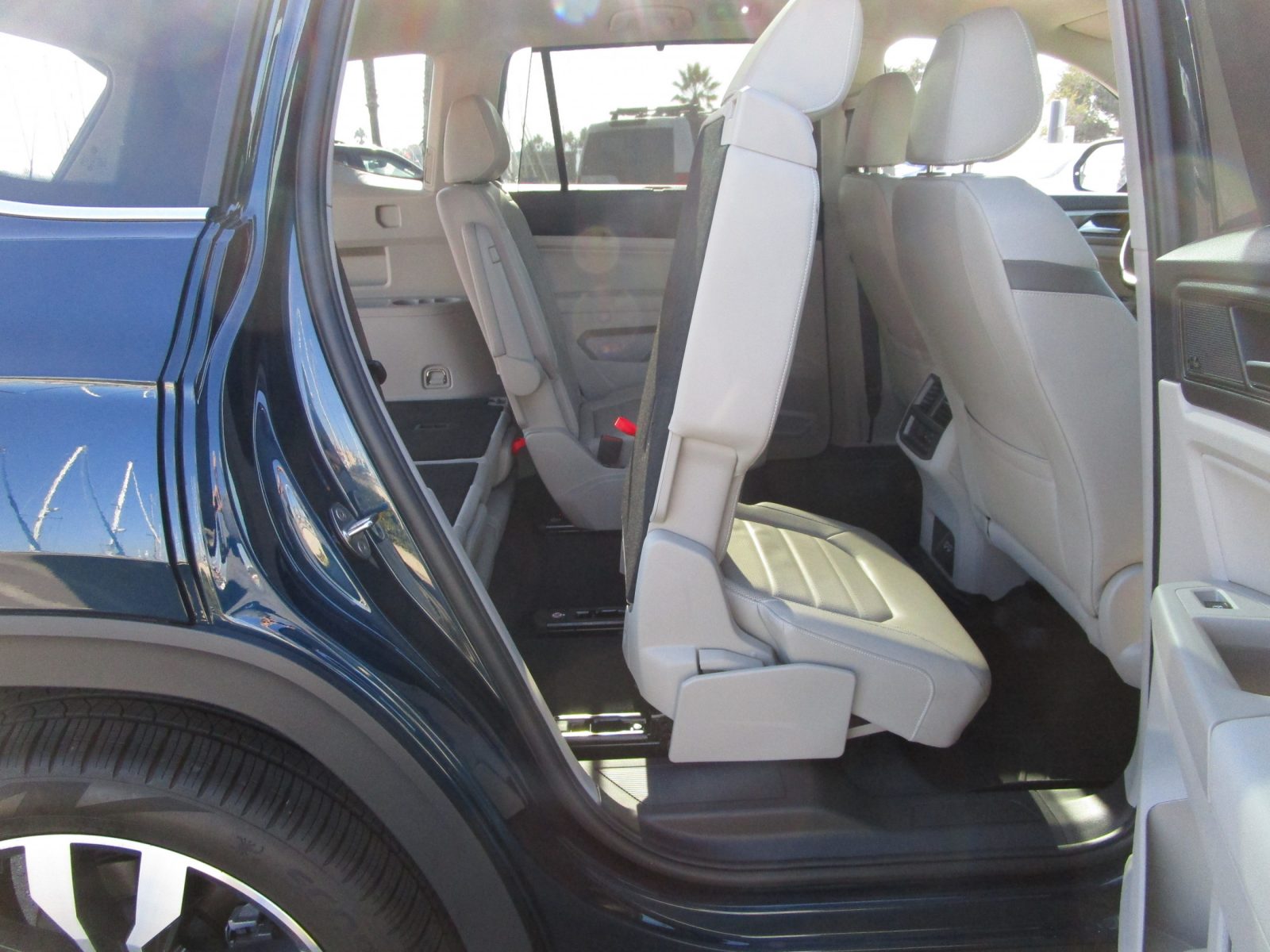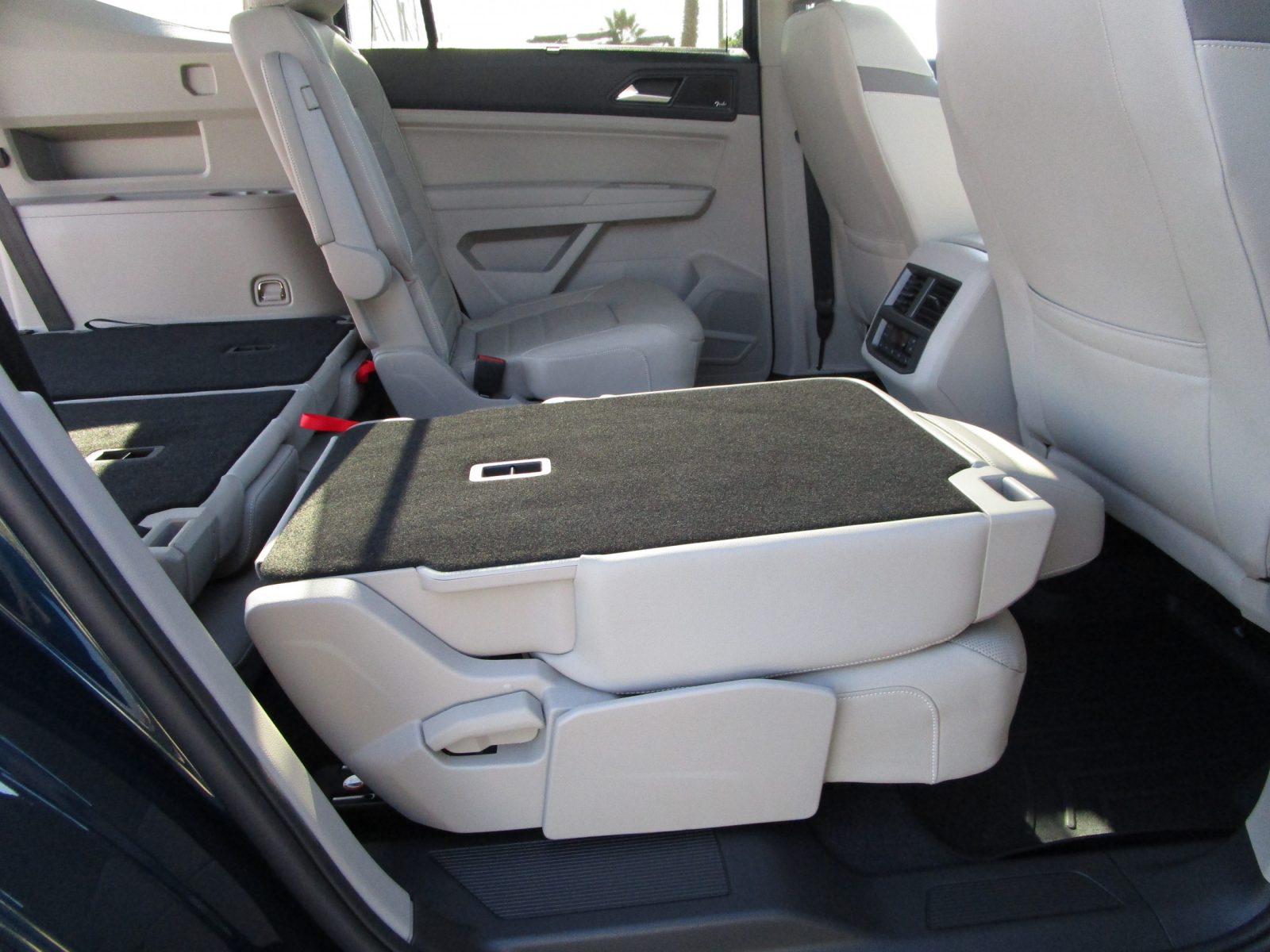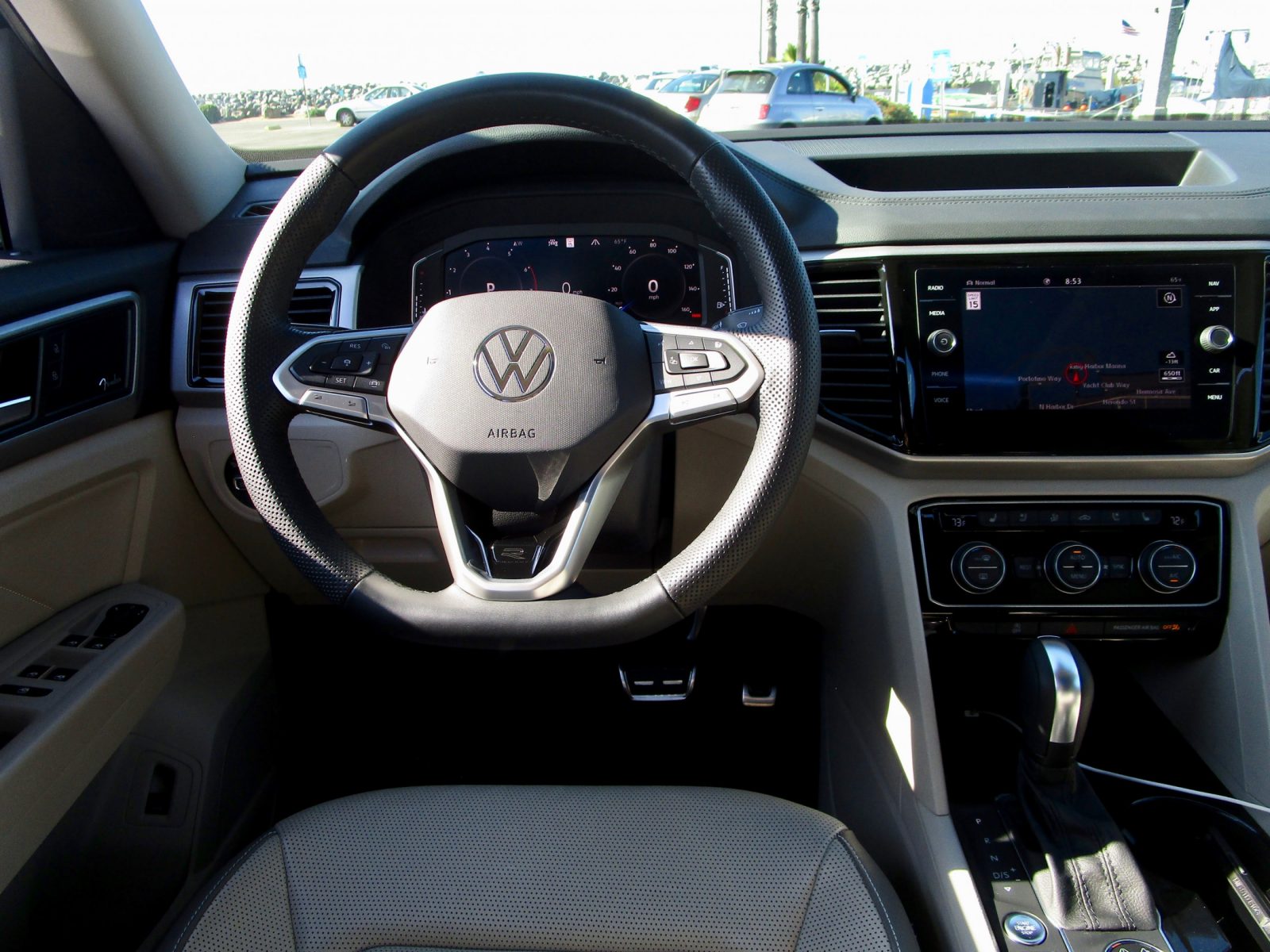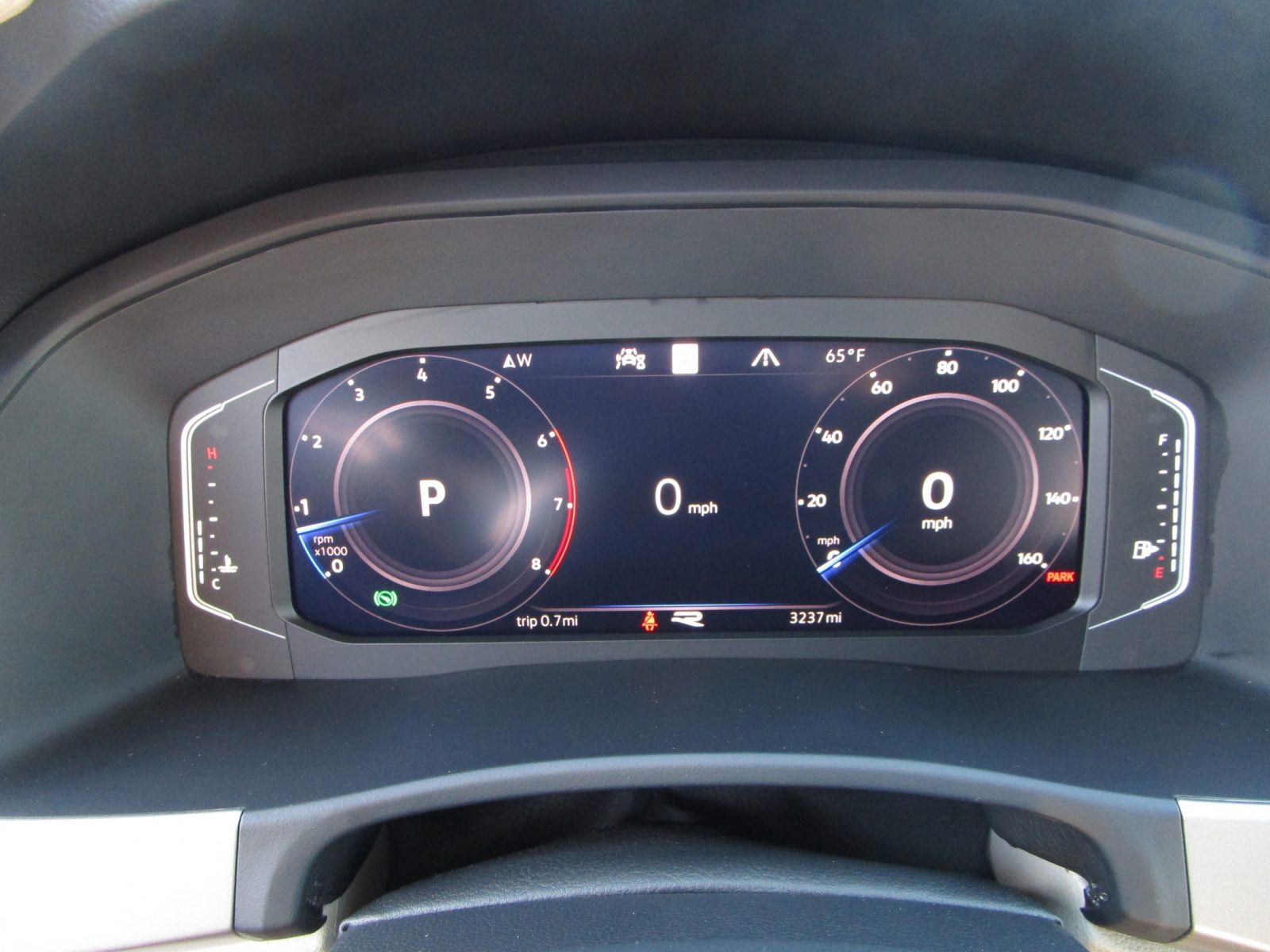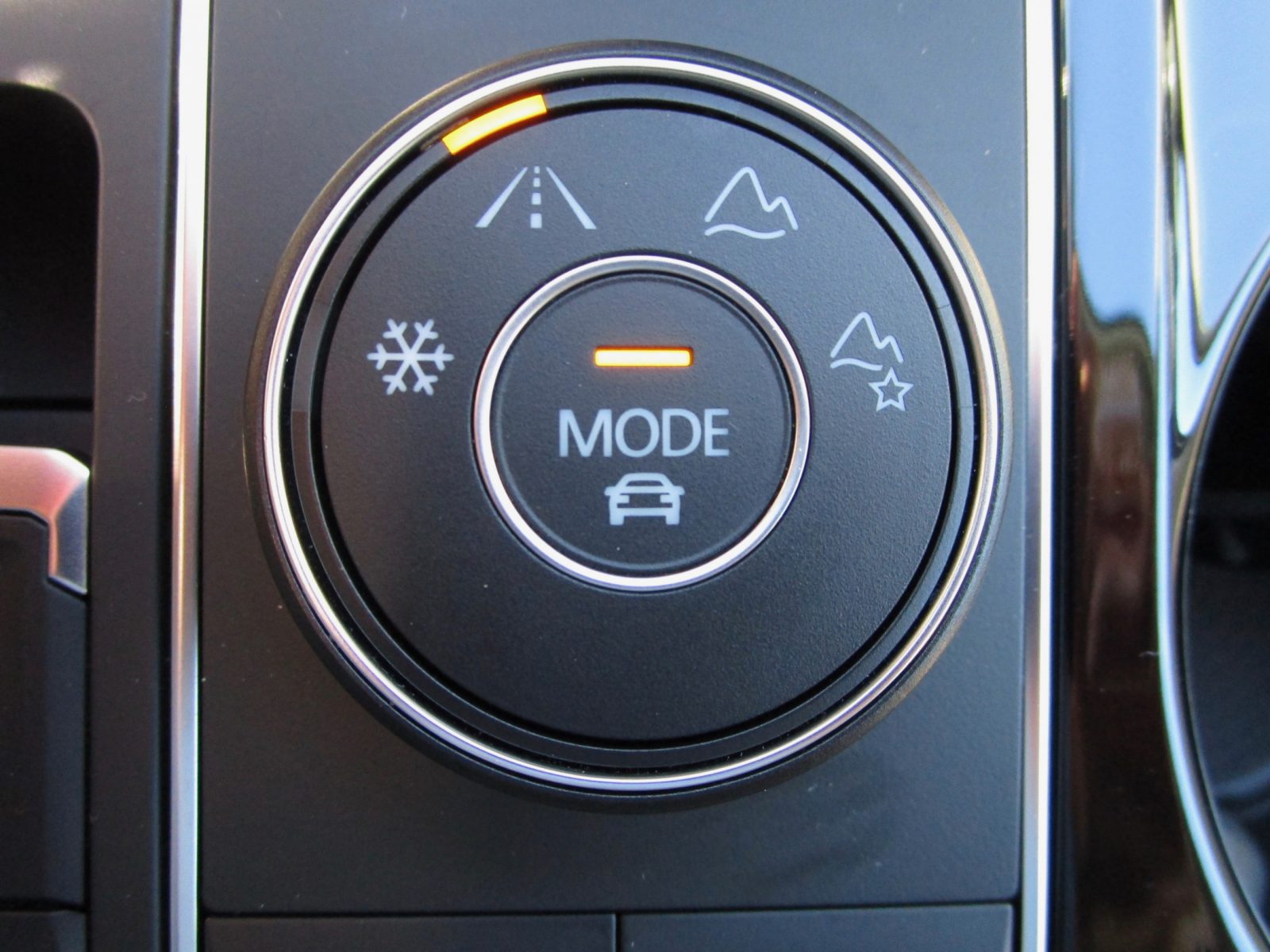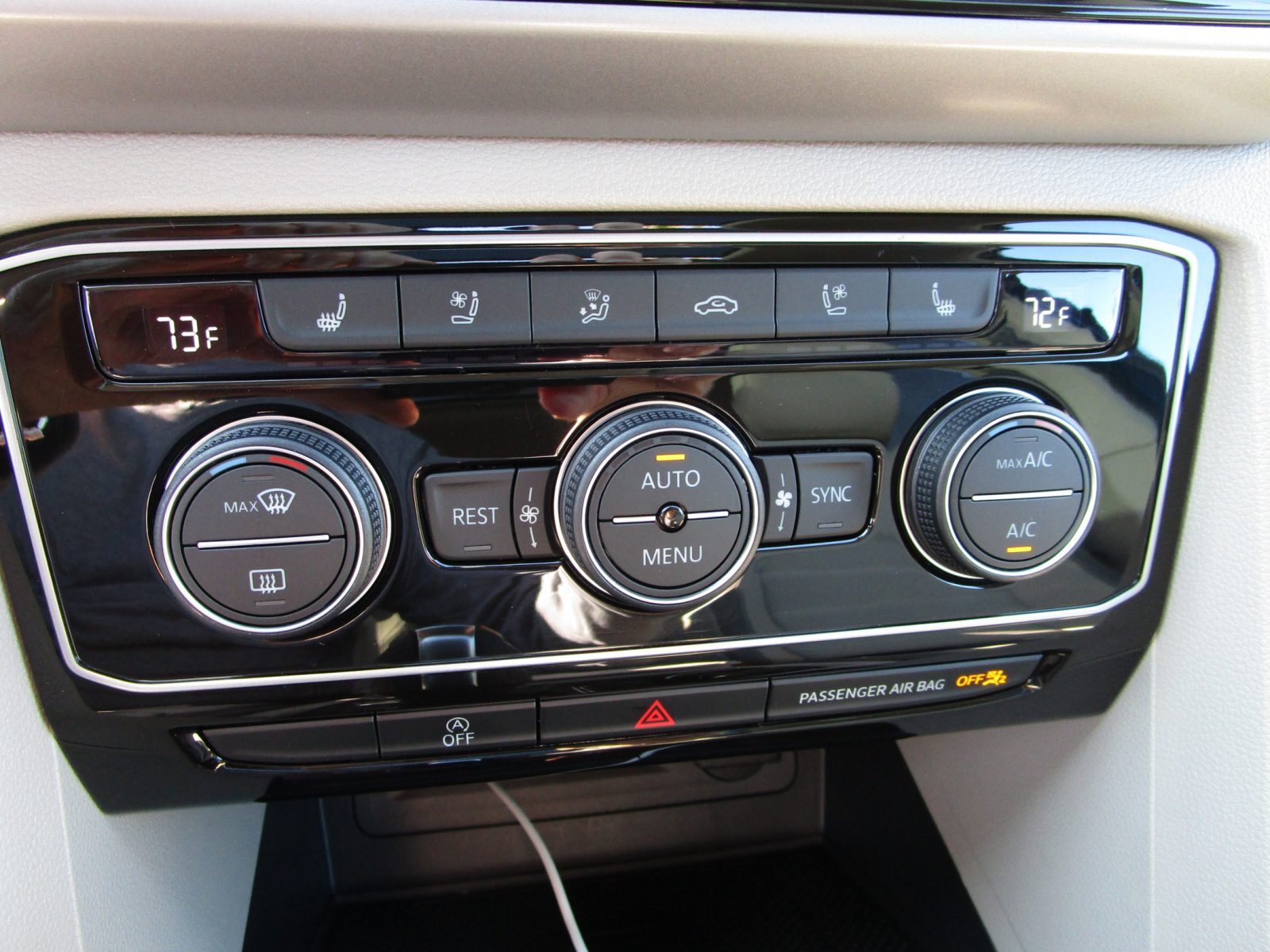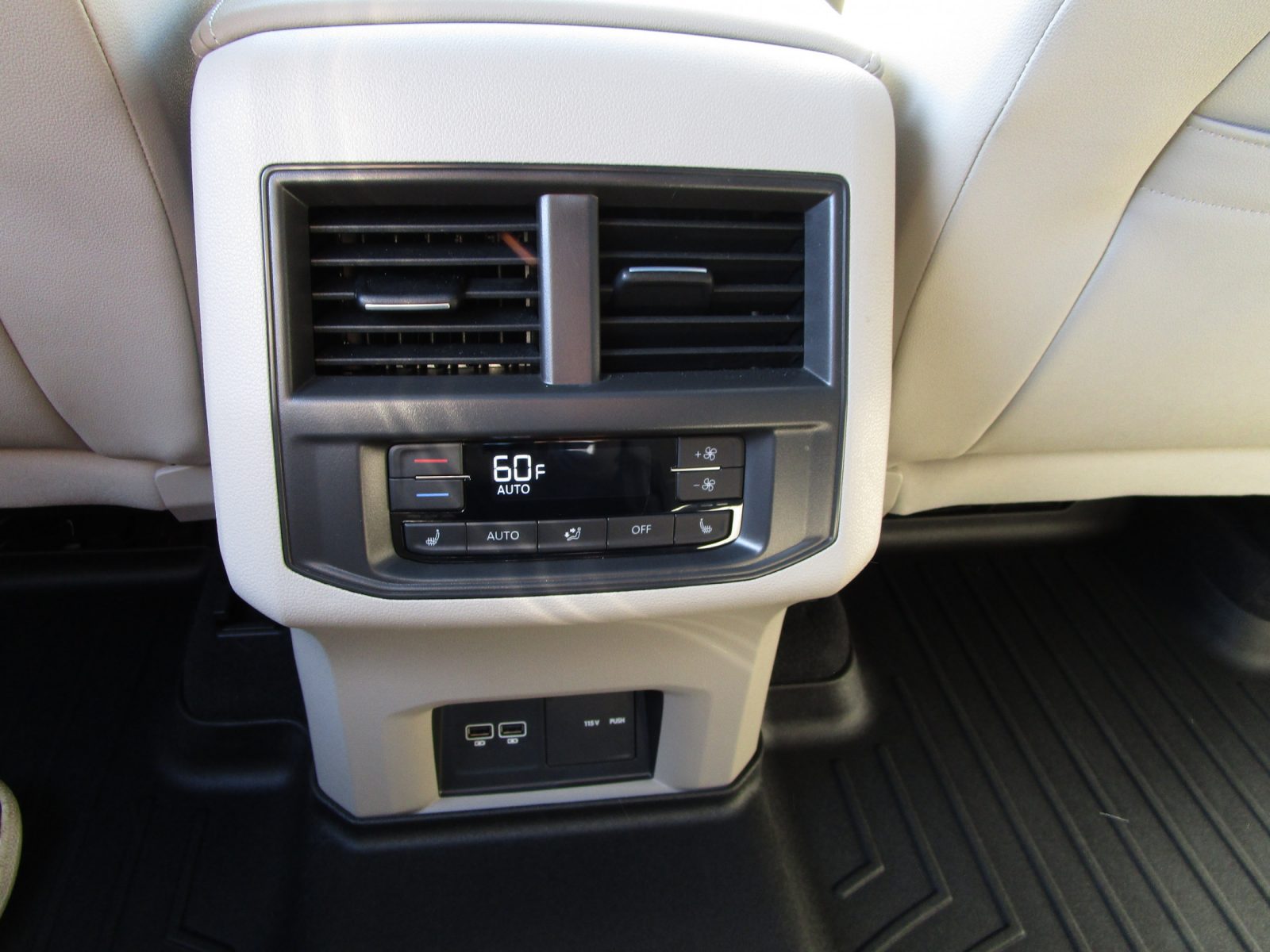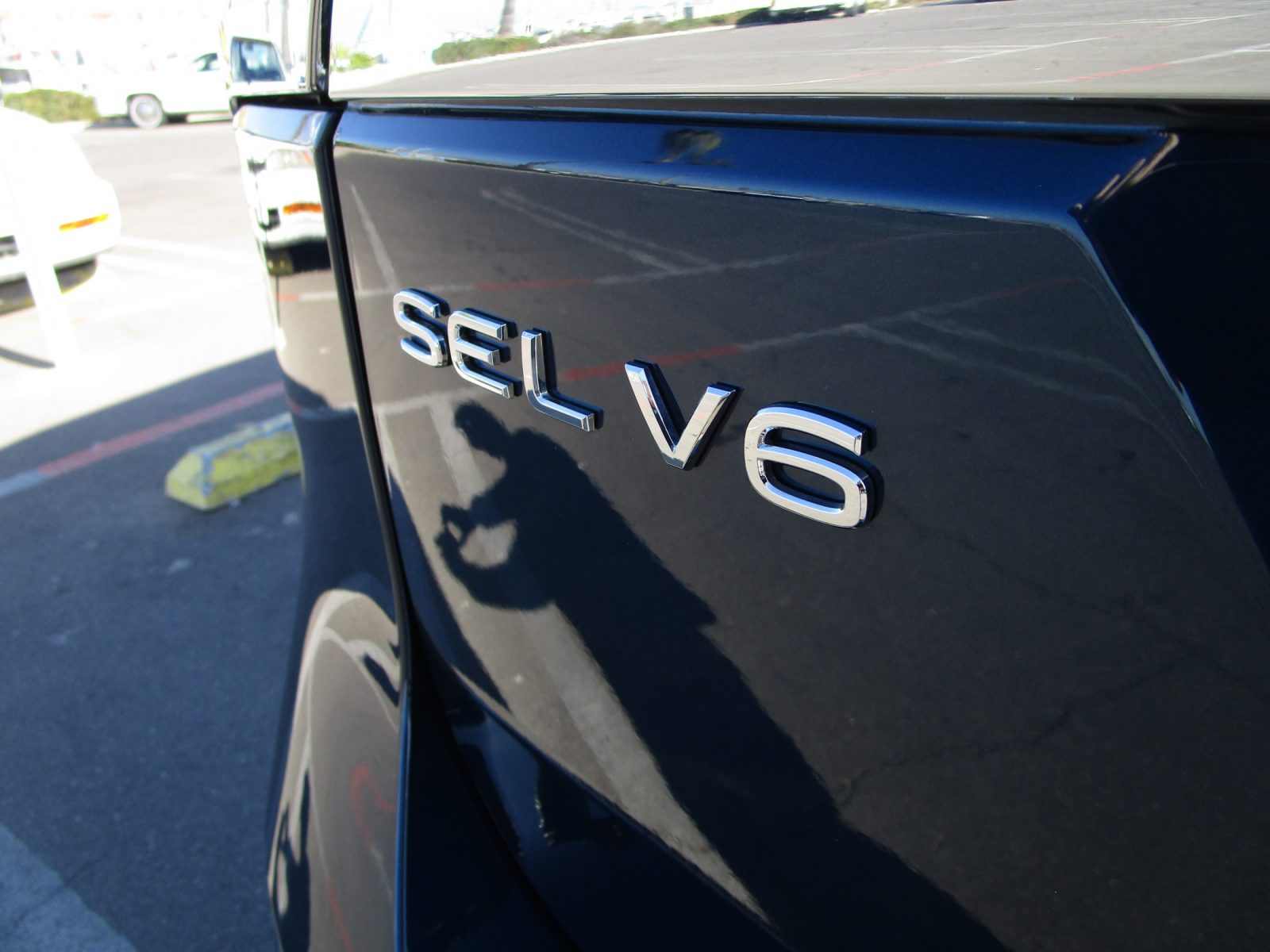The 3-row SUV segment is a funny thing. It seems to get hot and cold. Suddenly everyone wants one. Then just as suddenly, only those with an absolute need want them. Right now the market is hot, hot, with big winners including the Kia Telluride, Hyundai Palisade and Toyota Highlander.
Along with them has been the VW Atlas, which for 2021 gets a bit of a makeover, helping it take on these relative upstarts. How does it stack up? Let’s take a look!
Bigger and Buffer
While the Atlas has been the poster child for the “Big Box” SUV school of thought, for 2021, it’s been given some sporty duds and a more aggressive look. Slightly longer than before, all models get a new front and rear fascia that’s fresh and reminds us of the Atlas Cross Sport.
Our tester had a head start on the good stuff, being part of the sportier R-Line trim, which also gets a unique restyled front with large intakes and rear diffusor in glossy black out back. LED lights keep things modern and clean. The profile looks especially good, with black side skirts and fender flares, highlighting the muscular shoulders on the Atlas.
The best part in our eyes are the massive 21″ two-tone machined alloy wheels that really give a rugged look. Dressed in Tourmaline Blue Metallic our tester looked upscale, sporty, and stood out in the sea of silver and gray SUV’s that seem to be everywhere these days.
The Big Box Theory
Inside, is truly the great indoors, with one of the largest interiors in its class. Starting at the back, the 3rd row is comfortable for adults – something many SUV’s fail to offer. And with the third row up, there’s still plenty of storage space. Those seats fold easily and flat into the floor for a massive amount of space. A kick of the leg under the rear bumper opens the large tailgate for cargo-loading convenience.
On our SEL Premium tester the 2nd row are plush captain’s chairs, which offer loads of comfort, and also easily fold to create a flat floor and a truly humongous amount of cargo space. With the seats up, there are plenty of USB ports for all aboard, as well as convenient cubby places to store things.
Up front are hugely comfortable seats as well, covered in leather in the SEL Premium and with excellent support. The dashboard is familiar to VW owners, with simple, well thought out controls, and in our tester a handsome Digital Cockpit that create a sharp 10-inch TFT digital instrument display, and a nicely turned out 8-inch Info-tainment display. Apple CarPlay, Android Auto, Bluetooth and Navi are all along for the ride. Tri-zone climate control should keep everyone comfy as well.
With such a large vehicle, we really like the Parking Information feature that locates off-street parking. Powered by Parkopedia, the app finds you available parking spots which you can send to the Atlas’s navigation system. Very cool!
While you’re cruising around looking for parking there’s plenty to enjoy. Our tester featured a luxurious-looking two-tone color scheme which lifts the Atlas out of the utilitarian vibe of the lower trims. With a light color on the lower trim and on the leather seats, plus the SEL’s panoramic moonroof, the already spacious cabin looked even larger.
Big Power
Driving the Atlas is a surprising experience. You might expect a bus (not the VW kind), but it’s surprisingly more like a big European sedan, and heck, it doesn’t even feel that big.
Part of what makes driving the big VW is the excellent visibility – a tall upright sighting position and lots of window space makes it easy to place on the road. A contrast, say to the Honda Odyssey we tested recently that always felt just a little too large, and a little hard to know where the ends were. And if you have issues knowing where the Atlas ends, the available 360-degree overhead view makes parking easy.
Driving is easy too. While lower trim levels are offered with a turbo 2.0-liter, 4-cylinder that pumps out a strong 235 horsepower, our SEL had the 3.6-liter VR6 engine, which steps up the game to 276 horsepower and 266 lb.-ft of torque at 2,750 rpm. And it sounds deep and throaty doing so! The 8-speed automatic is an excellent unit, an easy pull on the shift lever puts you in Sport Mode that really picks up the pace and makes the big, blocky SUV respond like a svelte German sedan.
Helping put the power down is VW’s 4Motion all-wheel drive. A large knob in the center console lets you call up Normal, Sport, Eco and Individual drive modes letting you control the engine, gearbox and steering to your liking.
There are also Snow, Off Road, Custom Off Road and On-road settings, as well as useful things like Hill Descent Control and Hill Start Assist. Is hard to imagine running into a condition you can’t handle!
The ride is smooth, and especially quiet, composed and comfortable at highway speeds. 12-hour drive ahead? No sweat. Despite that long wheelbase, we found the Atlas to be extremely wieldy around town, and even twisty roads are fun. Must be those GTI engineers got a hand in on the big fella too?
Supersize Value
Like most European products, the end price is dependent on how crazy you go with the options. We’re kind of intrigued by the 2-wheel drive, 4-cylinder S model that starts at just $31,555. For something that big, that useful, and fun, it strikes us a bargain. Maybe it’s the heart and soul of the old VW transporter beating in a new kind of vehicle?
Our SEL Premium R-Line is at the other end of the spectrum, starting at $51,715 with the V6 engine and 4Motion All-wheel drive. Add in $1,020 for destination, and we rang the bell at $52,735.
Competitors at that price would include the Kia Telluride SX at $48,355. Its sibling the Hyundai Palisade weighs in at $48,925. Both are nicely equipped and handsome – a bit more truckish than our German sport sedan Atlas, though. Feeling the need for European flair? Here the Atlas scores big value points – the Volvo XC90 is $71,040, and the Audi Q7 is $64,190.
Handsome, well equipped with massive interior space and serving up a tasty European driving experience, the 2021 VW Atlas is one big, beautiful 3-row SUV!
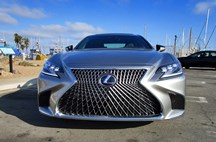
Ben Lewis grew up in Chicago, and after spending his formative years driving sideways in the winter – often intentionally – moved to sunny Southern California. He now enjoys sunny weather year-round — whether it is autocross driving, aerobatics, and learning to surf.

